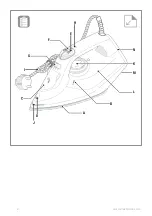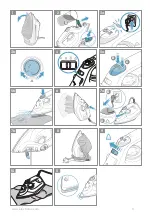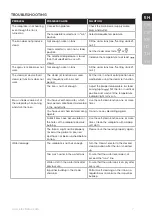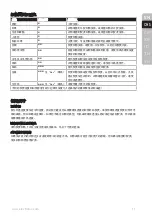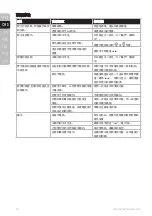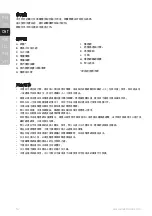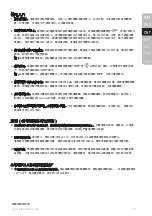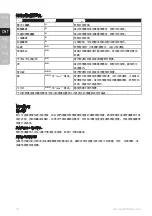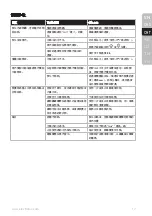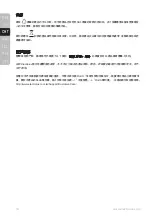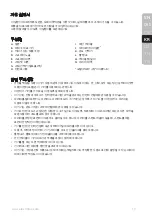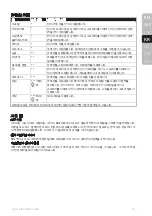
6
www.electrolux.com
CNT
CNS
KR
ID
TH
VN
EN
IRONING CHART
FABRIC
TEMPERATURE SETTING
IRONING RECOMMENDATION
Acrylic
Dry iron on the inner facing side.
Acetate
Dry iron on the inner facing side while the fabric is still
damp or use spray to dampen.
Nylon & Polyester
Iron on the inner facing side while the fabric is still
damp or use spray to dampen.
Rayon
Iron on the inner facing side of fabric.
Viscose
Mainly dry iron. Steam can be used under
manufacturer’s instructions.
Silk
Iron on the inner facing side. Use an ironing cloth to
prevent shine marks.
Cotton blends
Check the label and follow the manufacturer’s
instructions. Use setting for the fibre requiring the
lowest setting.
Wool & Wool blends
Steam iron on the inner facing side or use ironing
cloth.
Cotton
Dry iron while the fabric is still damp or use spray to
dampen. Use steam medium to high.
Corduroy
Steam iron on the inner facing side or use ironing
cloth.
Linen
to “max”
Iron on the inner facing side or use ironing cloth to
prevent shine marks, especially with dark colours.
Dry iron while the fabric is still damp or use spray to
dampen. Use steam medium to high.
Denim
to “max”
Use maximum steam.
Varied ironing speed and fabric dampness might cause optimal setting to differ from that recommended in
the table!
TIPS ANd TrICkS
Temperature settings
The iron heats up faster than it cools down, so we recommend that you start ironing the fabrics requiring the
lowest temperature. Use the lowest temperature with fabrics that have unusual finishes, such as sequins or
embroidery. If you are unsure about the fabric, start with a low temperature and iron on a hidden corner. Then
increase the temperature gradually if needed.
Avoiding marks on the fabric
Never iron areas with traces of perspiration or other marks, the heat fixes the stains on the fabric.
Washing fabrics before ironing
If the washing machine is heavily loaded or the spin drying revolutions are very high, the fabrics may come out
more creased. However, many fabrics are easier to iron if they are damp.


